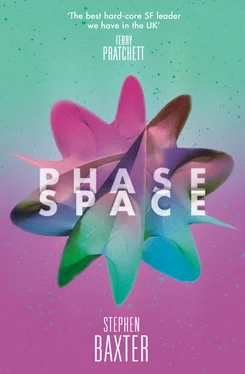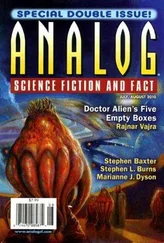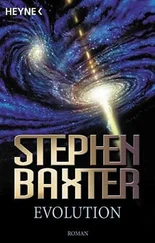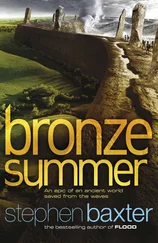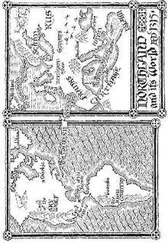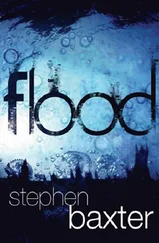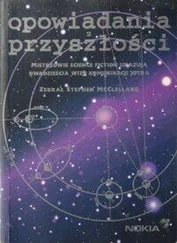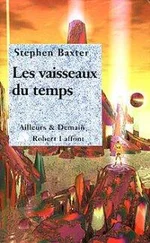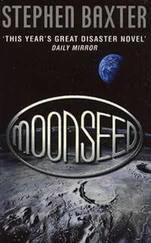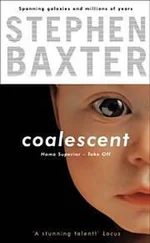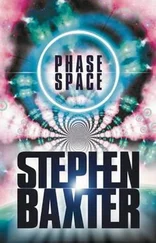She turns her light out.
It is many hours before he can sleep.
He has to go to the bathroom in the middle of the night. It is an old-man’s thing. He tries to float out of bed, and falls to the floor, heavy on the carpet. This has happened before.
The next day is their last in England, and they have to take a train into London, then the Tube back out to Heathrow.
Jays gets up early. Without waking Alice, he slips on his track suit and sneakers, and runs out into empty streets. Squat electric carts are delivering milk, whirring along the streets, making a noise that reminds him of the prototype Lunar Rovers he saw under test at Boeing.
He jogs until the air, already hot, is whistling in his throat.
He reaches the cathedral. It is locked up, and he is disappointed, but he discovers he can work his way around the outside. He quickly finds the Godwin Chapel. It is hard to miss, a dark, grimy encrustation on the cool sandstone of the cathedral.
He runs his hand over the exterior of the rock. It is heavily weathered, of course, and encrusted with lichen. But its vesicular nature is easy to confirm, in the bright morning light.
He knows that lunar basalts, formed when the great primordial impact basins were flooded with lava, have a lot in common with terrestrial lavas – they are mostly feldspar, pyroxene, olivine and ilmenite – but there are key differences too. Lunar rocks possess native iron, for instance. They have been subjected to shock damage from micrometeorite impact, and to radiation damage from solar wind and cosmic rays. They have some trace elements, such as hydrogen, carbon and nitrogen, implanted there by the solar wind. They contain no water at all …
He wishes he could take a sample. But he has no tools. And who would run the assay for him? He works his way around the chapel, running his hands over the surface.
He finds that a chunk of the chapel wall, a fist-sized pebble, has broken away from one corner. The pebble is just lying in the grass.
He cannot tell if this is frost damage, or perhaps vegetative, or some minor piece of vandalism.
Guiltily, he slips the pebble into his pocket.
On the train to London, with the two of them facing each other surrounded by luggage, he toys with the pebble.
‘Scottish basalt,’ Alice says.
‘Sure.’
‘You should be ashamed.’ She is laughing, but he senses she means it. ‘If every American tourist came away with trophies there’d be none of England left …’
He knows she is right. He does not want to keep this piece.
She calls him a Moon-calf again.
He waits until she has gone to the buffet for a fresh coffee. He glances around; nobody can see him.
He has a full can of diet soda. He rests his rock, on a newspaper, on the tiny British Rail table that is fixed to the wall before him. He smashes the rock with the base of the can; the rock cracks open.
As the interior is exposed to the air for the first time, there is a smell like wood-smoke.
He breathes it in for a few seconds. Then he brushes the fragments of rock into the palm of his hand, and dumps it out the window. The rock is scattered along the track, and lost; he brushes the last grains from his hands.
When Alice returns, London is approaching, modern suburbs crowding out the ancient English landscape. They start to talk about the flight home, checking tickets and terminals and passports.
EARTHS
It began, in fact, with a supernova: thus, from the beginning, it was a causal chain shaped by stupendous violence.
The star was a blue supergiant, twenty times the mass of Earth’s sun, fifty thousand times as bright. It had formed a mere million years ago.
Nevertheless there was life here.
It had come drifting on the interstellar winds from older, more stable systems, and taken root on worlds which cautiously skirted the central fire.
But the hydrogen fuel in the star’s fusing core was already exhausted.
The core, clogged with helium ash, began to burn that ash itself, helium nuclei fusing to carbon. And the carbon compacted to neon, the neon to oxygen … At last iron nuclei snowed, inert, on the centre of the star.
The core’s free-fall implosion took fractions of a second. The star’s outer layers were suddenly suspended over an effective vacuum. They collapsed inwards, the infalling layers crashing onto the rigid core remnant, and rebounded violently. The reflected shock wave was hurled out of the centre of the star, dragging away the star’s outer layers with it …
For a week, the dying star outshone its Galaxy.
For forty years the expanding shell of matter travelled, preceded by a sleet of electromagnetic radiation: gamma rays, X rays, visible light. A human eye might have seen a brilliant blue-white star grow suddenly tremendously luminous, fifty times as bright as the Moon, as bright as all the other stars in the sky combined.
But Earth did not exist, nor even, yet, the sun. The garish light of the supernova washed, instead, over the thin tendrils of a gas cloud: cold, inert, stable.
And in any event no human telescope could have detected, rushing before the light storm, a single, delicate, spidery silhouette.
A fleeing craft.
In the confines of Ehricke ’s airlock Oliver Greenberg put on his gloves and snapped home the connecting rings. Then he lifted his helmet over his head.
The ritual of the suit checklist was oddly comforting. In fact, it was just the old Shuttle EVA routine he’d undergone a half-dozen times, in an orbiter-class airlock just like this.
But the Ehricke was no dinged-up old orbiter, and right now he was far from low Earth orbit.
He felt his heart hammer under his suit’s layers.
Mike Weissman, on the hab-module’s upper deck, was monitoring him. ‘EV1, you have a go for depress.’
Greenberg turned the depress switch on the control panel. ‘Valve to zero.’ He heard a distant hiss. ‘Let’s motor.’ He twisted the handle of the outer airlock hatch and pushed.
Oliver Greenberg gazed out into space.
He moved out through the airlock’s round hatchway. There was a handrail and two slide wires that ran the length of the curving hull, and Greenberg tethered himself to them. It was a routine he’d practised a hundred times in the sims at Houston, a dozen times in LEO. There was no reason why now should be any different.
No reason, except that the Earth wasn’t where it should be.
In LEO, the Earth had been a bright floor beneath him all the time, as bright as a tropical sky. But out here, Earth was all of five million kilometres away, reduced to a blue button the size of a dime three or four arms-lengths away, and Greenberg was suspended in a huge three-hundred-sixty-degree planetarium just studded with stars, stars everywhere …
Everywhere, that is, except for one corner of the sky blocked by a vaguely elliptical shadow, sharp-edged, one rim picked out by the sun.
It was Ra-Shalom: Greenberg’s destination.
He was looking along the length of the Ehricke’s hab module. It was a tight cylinder, just ten metres long and seven wide, home to four crew for this year-long jaunt. The outer hull was crammed with equipment, sensors and antennae clustered over powder-white and gold insulating blankets. At the back of the hab module he could see the bulging upper domes of the big cryogenic fuel tanks, and when he turned the other way there was the Earth-return module, an Apollo-sized capsule stuck sideways under the canopy of the big aerobrake.
The whole thing was just a collection of cylinders and boxes and canopies, thrown together as if at random, a ropy piece of shit.
Читать дальше
